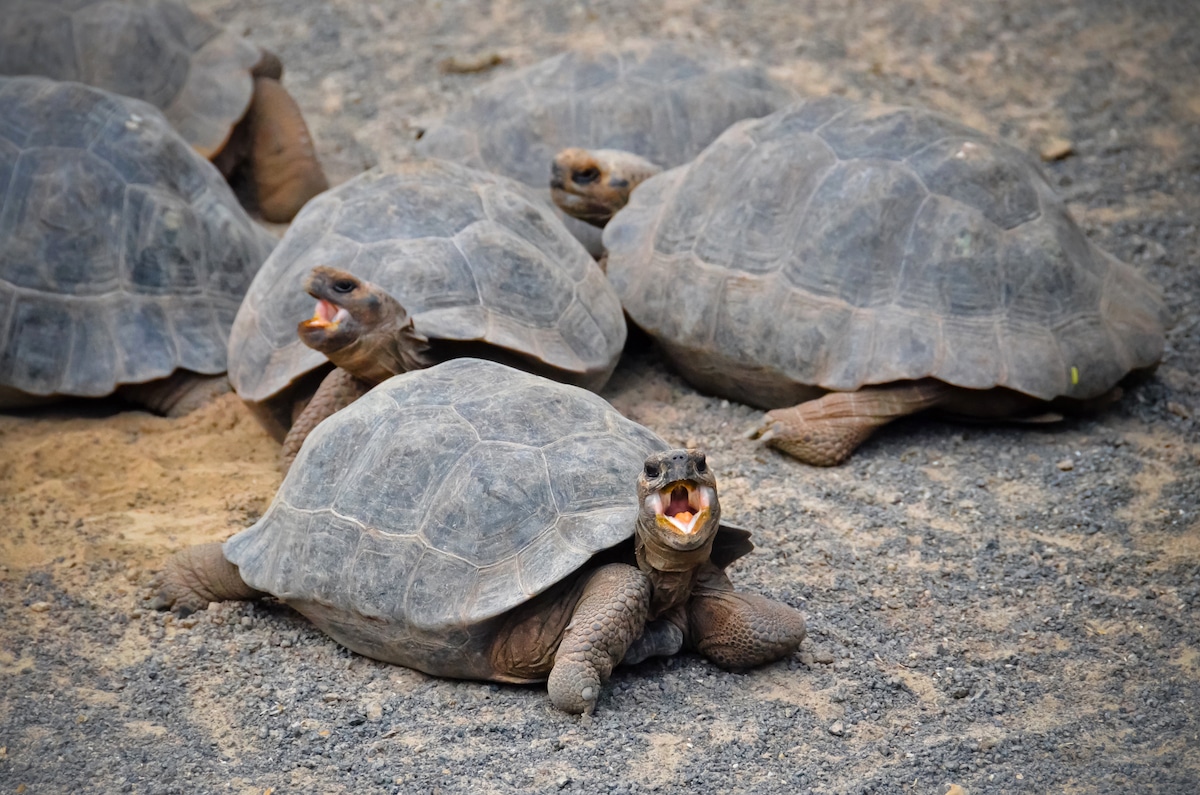Ecuador Investigates Alleged Poaching of Four Galápagos Tortoises

 Why you can trust us
Why you can trust us
Founded in 2005 as an Ohio-based environmental newspaper, EcoWatch is a digital platform dedicated to publishing quality, science-based content on environmental issues, causes, and solutions.
There were once so many giant tortoises living on Ecuador’s Galápagos Islands that Spanish explorers named the archipelago after the Spanish world for tortoise — galápago — when they first explored it in 1535, according to National Geographic. Yet hunting caused their numbers to plummet from at least 250,000 hundreds of years ago to only 15,000 today, and, sadly, it appears the slaughter isn’t over yet.
The Ecuadorian government opened an investigation into the deaths of four Galápagos giant tortoises that officials fear were hunted and eaten, the country’s prosecutorial office announced Monday, as AFP reported.
“Ecuador’s Prosecutor opened a preliminary investigation to look into the facts related to the alleged hunting and slaughter of four giant tortoises,” the office tweeted.
The office went on to say that its unit focusing on crimes against nature and the environment would take statements from workers at Galápagos National Park and have wildlife experts perform necroscopies on the tortoises.
The bodies were found in a wetland area of Isabela, the largest island in the archipelago, and the national park announced the deaths July 7, Ecuador’s environmental minister said on WhatsApp, as AFP reported. It is not known exactly which of the 13 living species of Galápagos tortoises the dead represented.
Galápagos tortoises — like many of the archipelago’s unique animals — were made famous by the writings of scientist Charles Darwin, whose visit to the island chain inspired his theory of evolution.
“As I was walking along I met two large tortoises, each of which must have weighed at least two hundred pounds: one was eating a piece of cactus, and as I approached, it stared at me and slowly walked away; the other gave a deep hiss, and drew in its head. These huge reptiles, surrounded by the black lava, the leafless shrubs, and large cacti, seemed to my fancy like some antediluvian animals,” Darwin wrote in The Voyage of the Beagle.
Their fame has not protected them from threats, however, as between 100,000 and 200,000 of them were killed for food and oil between the 17th and 19th centuries, according to National Geographic. Today, the main threat they face is egg-predation and competition from species that have been introduced to the islands like feral pigs, dogs, cats and rats.
The tortoises are now protected under Ecuadorian law, and killing them has been illegal since 1933, BBC News explained. Anyone found to have violated the ban could face a three-year prison sentence. But the ban hasn’t always been enough to keep them safe. In September 2021, 15 Sierra Negra giant tortoises were found dead on Isabela, and evidence indicated they had been killed for their meat.
“The highly imperiled state of tortoises today on southern Isabela Island, caused by the historic destruction of tortoise populations by whalers and early colonists, has been difficult to reverse because poaching continues,” the Galápagos Conservancy said at the time, as Zenger News reported. “While only a few local residents still kill tortoises, local demand for tortoise meat and other tortoise products has escalated.”
Subscribe to get exclusive updates in our daily newsletter!
By signing up, you agree to the Terms of Use and Privacy Policy & to receive electronic communications from EcoWatch Media Group, which may include marketing promotions, advertisements and sponsored content.

 233k
233k  41k
41k  Subscribe
Subscribe 



